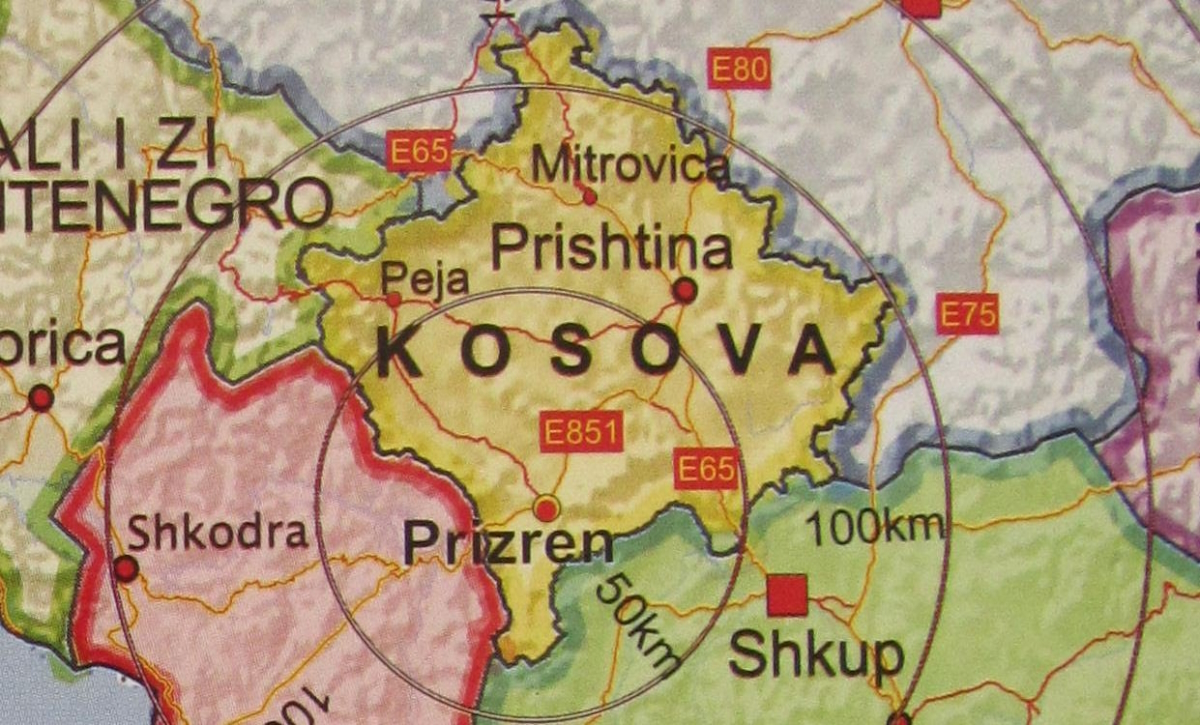By Linda D. Kozaryn American Forces Press Service WASHINGTON – The full contingent of about 7,000 U.S. troops taking part in Operation Joint Guardian will be in place in Kosovo within the next two weeks, according to Army Lt. Gen. John M. McDuffie, Joint Staff logistics director. McDuffie said service members and their equipment are arriving daily in Kosovo by air, land and sea. About 4,500 are now in the U.S. sector in southeastern Kosovo, where they will serve with a Greek battalion, a Polish battalion and a Russian contingent.

McDuffie described what he called the „meat and potato issues“ of the operation at a Pentagon briefing June 29. The logistics chief said an initial wave of U.S. troops deployed as part of the NATO-led enabling force, and a second wave is now moving into the region. Engineering and medical support are engaged and sustainment operations are under way.
NATO expects all the 50,000 international troops slated for the Kosovo security force, known as KFOR, to be in place by about mid-July. Alliance authorities accelerated troop deployments in light of continuing tension between Serb residents and returning ethnic Albanian refugees.
KFOR’s mission is to promote stability, cooperation and security, NATO officials said. Its main aim is to allow safe return of refugees and ensure compliance with the June 9 agreement signed by NATO and Federal Republic of Yugoslavia military authorities.
All NATO countries with military forces are contributing to Operation Joint Guardian, along with Russia, Lithuania, the United Arab Emirates, and other non-NATO countries. At present, about 20,000 international troops have deployed to Kosovo. NATO’s goal is to get the full contingent in as soon as possible. NATO-led forces are being called upon to deal with violence that continues to erupt in the wartorn province.
NATO-led forces first entered Kosovo June 12. KFOR established tactical command in Pristina, and advance elements of French, British, Italian, German and U.S. forces entered five designated sectors. On June 20, KFOR announced all Yugoslav military and police units had departed Kosovo and NATO formally terminated its air campaign dubbed Operation Allied Force.
McDuffie said U.S. forces were among the first to enter Kosovo. About 1,900 members of the 26th Marine Expeditionary Unit deployed from the USS Kearsarge, USS Gunston Hall and USS Ponce in the Aegean Sea. The Marines traveled through Thessaloniki in northern Greece, to Skopje, Macedonia, and then to the Kosovar town of Gnjilane. They are slated to leave Kosovo when four battalions from the Army’s 1st Infantry Division arrive from Germany.
About 1,700 soldiers from Task Force Hawk moved from Albania to Skopje as part of the initial enabling force. They then moved into Urosevac, where Task Force Falcon Commander Army Brig. Gen. John Craddock and 200 U.S. European Command troops established headquarters.
McDuffie noted that some Army, Air Force and Navy engineers will remain in Albania, where they are engaged in humanitarian operations, improving roads and supporting refugee camps. All Task Force Hawk elements are slated to leave Albania by about mid-August, he said.
Now that the initial force is in place, McDuffie said, defense officials have started moving troops and equipment from U.S. European Command. Service members were slated to board planes June 30 at Ramstein Air Base, Germany. Heavy equipment had already been sent ahead via military roll-on, roll-off ships roughly the size of aircraft carriers.
Military transportation specialists loaded tanks, Bradley fighting vehicles, artillery pieces, and other heavy equipment aboard the USNS Bob Hope in Bremerhaven, Germany. The ship reached Thessaloniki June 29. A second transport ship, the USNS Sonderman, is due to arrive there July 3. Both ships can carry about 26,000 tons of equipment and vehicles, McDuffie pointed out.
The military’s power projection capability is a triad of sealift, airlift and pre-positioning, he said. These vessels provide „tremendous capability,“ not only for sealift, he said, but also as a pre-positioning site for heavy equipment.
Sealift operations will also help sustain U.S. troops in Kosovo, McDuffie said. Supplies will arrive in Thessaloniki to be transported by ground vehicles to Kosovo. „Most of the nations that are supporting KFOR are using this port,“ he said. „So we’ve got a multinational cell there that deconflicts the arrival of ships.“
Emergency supplies will be flown from Ramstein to Skopje, McDuffie added.
A combat support hospital has been set up in Gnjilane with three operating rooms and up to 54 beds, McDuffie said. There is a Mobile Army Surgical Hospital in Skopje with one operating room and 14 beds. If air evacuation is called for, service members would be carried via helicopter to Skopje and then to Landstuhl Army Medical Center in Germany via fixed-wing aircraft.
The military built a robust joint engineering capability into the force mix, anticipating difficulty with lines of communications, roads and bridges, McDuffie said. Army engineers and Navy Seabees are being deployed to help build two base camps within the U.S. sector and be available to do road and bridge repair.
So far, McDuffie said, infrastructure damage within the U.S. sector has turned out to be less than expected.
DefenseLINK News: U.S., Allied Troops Flow into Kosovo
http://www.defenselink.mil/news/Jul1999/n07011999_9907014.html